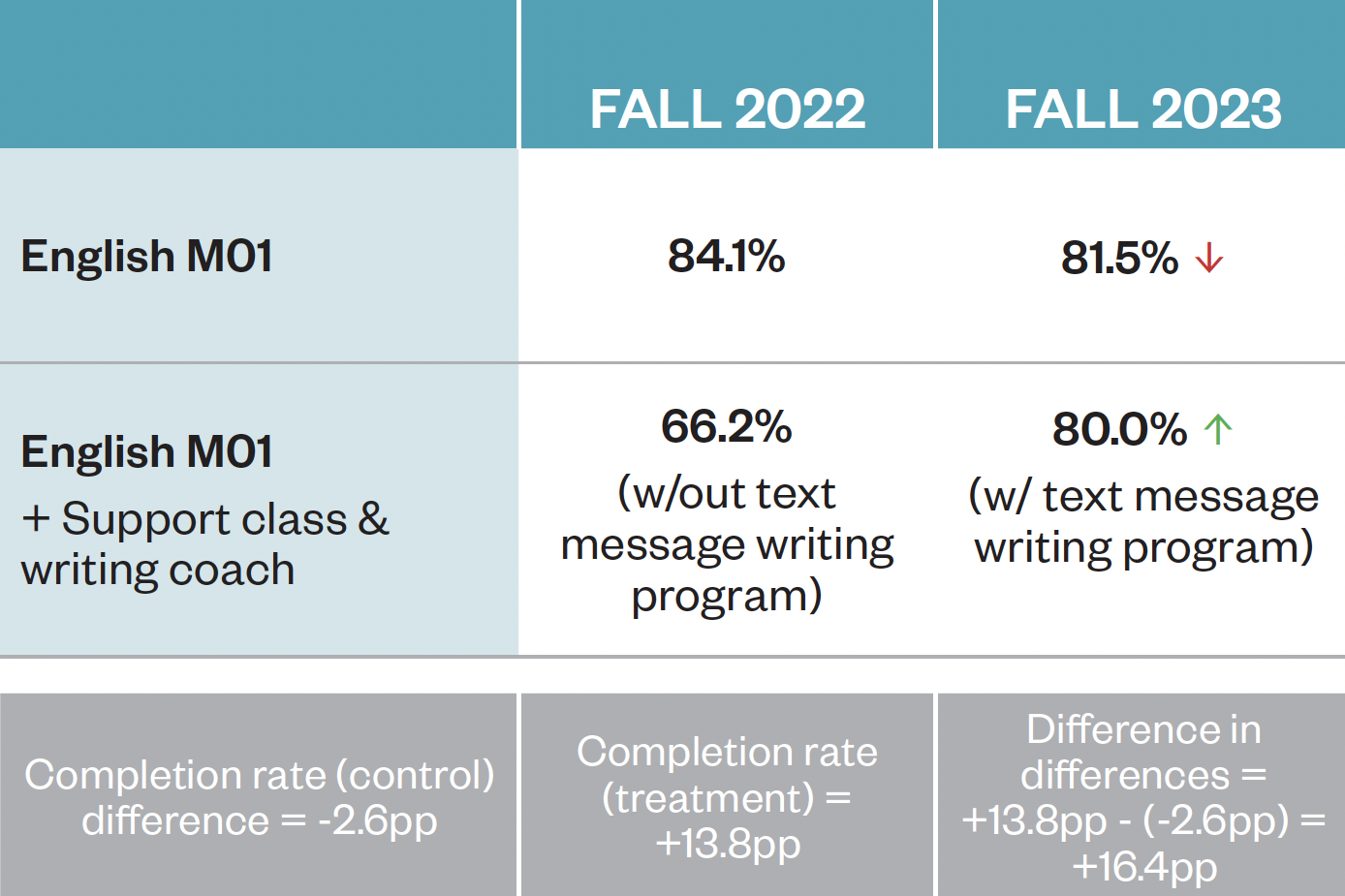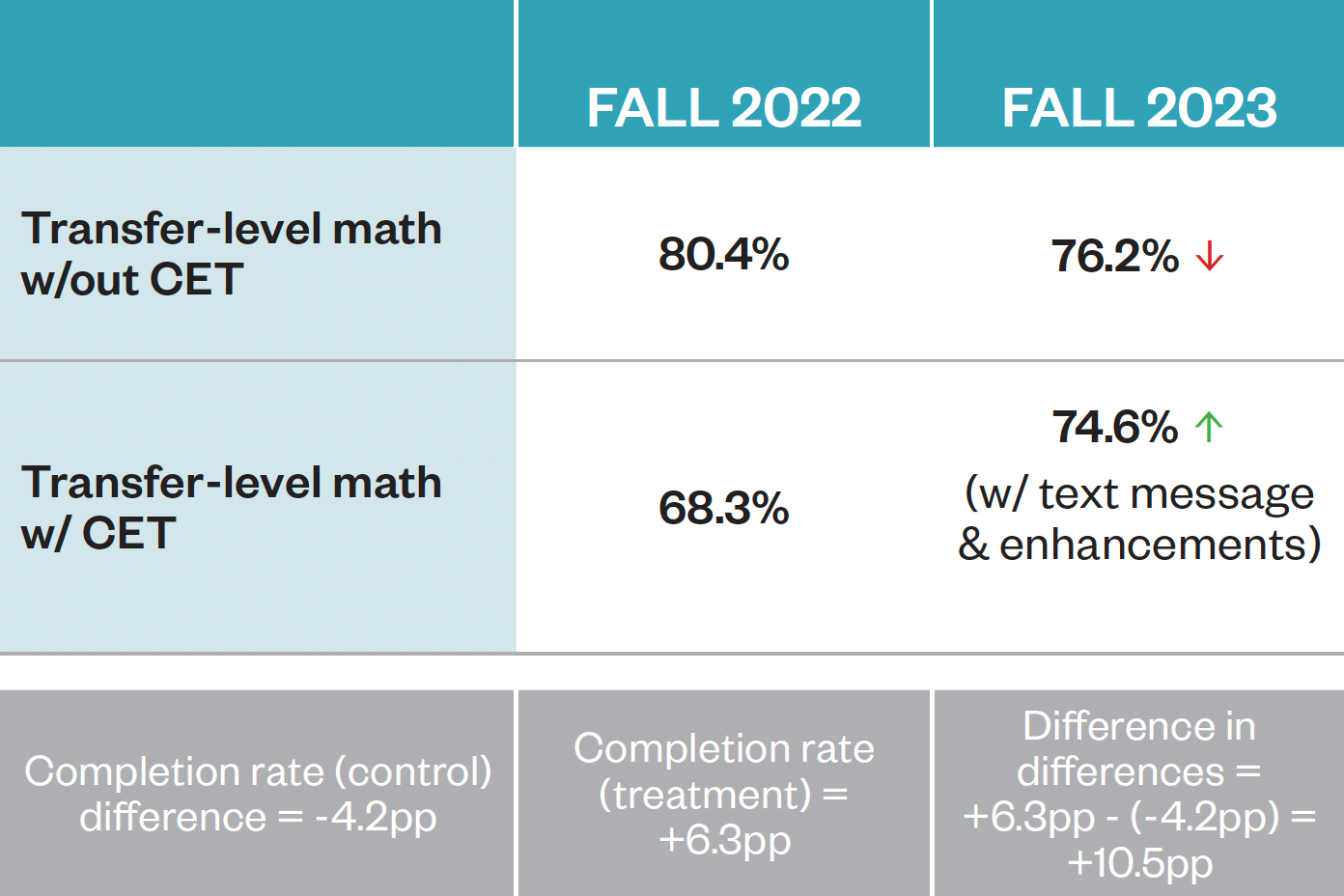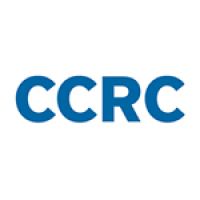By Jamie Whittington-Studer and Crystal Salas
When staff at Moorpark College, a community college in Ventura County, California, sat down to brainstorm strategies for improving completion rates in transfer-level math and English courses, we started with a likely subject: tutoring.
Data revealed that individual students who regularly received tutoring for math and English courses saw higher success rates. However, too few students were attending tutoring for those results to make an impact on campus-wide success rates, and the students in greatest need of academic support were not among those who regularly attended.
While the challenge faced by Moorpark was nothing new for tutoring and learning centers in higher education, our response and the increase in completion rates that followed were remarkable.
By implementing new practices, including the use of a program that makes reaching out for support as simple as sending a quick text, Moorpark saw a 760% increase in tutoring attendance and a double-digit increase in completion rates over the course of just one semester.
You can find an expanded version of this blog on the Moorpark College website.
Course-Embedded Tutoring and Post-Pandemic Challenges
Since the early 2000s, the Moorpark College Tutoring and Learning Center (TLC) has used the course-embedded tutoring (CET) model as the primary means of support in STEM classes across campus. Working directly in the classroom, the embedded tutor helps the instructor enhance student learning and engagement and provides individual and group tutoring sessions for the students. At Moorpark, the CET program focuses on courses with historically low success rates and/or large equity gaps, providing hands-on, high-impact support in crucial general education and transfer-level courses.
Prior to the pandemic, the TLC was the campus hub for academic and social support, with over 17,000 student visits in the 2017-2018 academic year. Enrollment challenges and significant changes to the educational landscape as a result of the COVID-19 pandemic caused a devastating decline in TLC engagement: Only 3,869 students visited it in 2021-2022.
As Moorpark began its transition back to on-campus instruction, the TLC struggled to restore pre-pandemic engagement rates. Given the crucial impact high-dose tutoring can have on student success rates, particularly amid post-pandemic achievement gaps, reengaging students with tutoring and learning services became a top priority for supporting student success.
Increasing Engagement Through Text Messages
Following the successful use of text-message communication to provide high-impact, on-demand support in a variety of student services departments during the pandemic, the Department of Institutional Effectiveness was eager to increase student engagement with tutoring services by making contacting a tutor via text painless and convenient. In the fall of 2023, the college added two-way texting supports and additional training for tutors to its CET model.
During the first week of their math or English course, students were introduced to their class’s assigned tutor and given the tutor’s personal phone number. Students were instructed to reach out via text to set up a tutoring appointment, receive clarification on an assignment, or ask any quick course-related questions. Tutors reached out a couple times a month to invite students to group study sessions, send reminders about or tips on assignments, and extend encouragement at key points in the semester. Some faculty–tutor teams developed outreach campaigns whereby the instructor would provide the tutor with a list of students in the class who might benefit from tutoring. Math embedded tutors also gave micro-lessons on study skills, time management, notetaking, test preparation, and other learning strategies to help support the development of academic resilience and ensure student success.
At the same time, a redesigned joint faculty–CET training program was employed to maximize the impact of course-embedded tutors on student success and engagement in the classroom.
Effect on Student Engagement and Completion Rates
The combined interventions resulted in a 337% increase in unduplicated attendance at group review sessions, with 162 individual students attending a review session during the fall 2023 semester, up from 37 a year earlier. In total, there was a more than sevenfold increase in attendance (including repeat attendance), with 585 students attending review sessions during the fall 2023 semester, up from 68 a year earlier.
A difference-in-differences (DID) analysis indicates that students enrolled in English courses with text-enabled embedded tutors had a 16.4-percentage-point greater improvement in course completion rates than students in English courses without additional support, after accounting for trends in both groups over time. Specifically, between fall 2022 and fall 2023, the treatment group saw an increase in English completion rates of 13.8 percentage points, while the control group experienced a decrease of 2.6 percentage points.
Effect of Support Interventions on English Completion Rates

DID analysis of completion rates indicates that students enrolled in math classes with text-enabled tutors experienced a 10.5-percentage-point greater gain in course completion rates from fall 2022 and fall 2023 compared to students in math courses without additional support. While treatment-group students’ math completion rates increased by 6.3 percentage points, control-group students’ completion rates declined by 4.2 percentage points.
Effect of Support Interventions on Math Completion Rates

Additionally, DID analysis of completion rates suggests these interventions narrowed the gap in rates between Hispanic and White students. Among students in the treatment group, the gap decreased by 7.8 percentage points, from 16.2 percentage points in fall 2022 to 8.4 percentage points in fall 2023. In the control group, the gap increased by 2.4 percentage points, from 12 percentage points to 14.4 percentage points.
Key Takeaways
High access spurs continued engagement. When taking a challenging course, students often delay the use of tutoring support until their performance drops or they’re struggling with course concepts. These interventions expedited student engagement with tutoring services and encouraged a more proactive approach to academic support. Additionally, student engagement rates remained mostly consistent during fall 2023, which suggests that these interventions incentivized the continued use of tutoring throughout the semester.
Tutor–faculty collaboration maximizes benefits and impact. Increased collaboration between tutors and faculty yielded several benefits, including more customized, timely, and impactful support. Tutors gained greater insight into the pedagogical style and practices of the instructor, which enabled them to provide more tailored academic support to students and a more targeted focus on high-need concepts.
Text-message communication enhances social and emotional support. Qualitative analysis of the text-message communication between Moorpark tutors and their students revealed that tutors’ messages of encouragement and support during stressful periods in the semester often received the highest engagement rates among students, with many students expressing gratitude and appreciation for the messages. Additionally, ongoing research into the benefits of text-message communication in higher education suggests communicating by a familiar medium may make asking for support less intimidating and facilitate conversation about support resources.
High-Dosage Tutoring Key to Improving Student Outcomes
High-dosage tutoring is one of the few academic interventions with demonstrated significant positive effects on math and reading achievement. However, facilitating high-dosage tutoring is often a significant challenge for tutoring centers. For tutorial services to be high dose, they must include the following:
- One-on-one or small group sessions
- Materials/strategies aligned with classroom content/expectations
- Weekly tutoring sessions (at least 30 minutes per session)
- Flexible and accessible tutoring services
- The ability for students to meet regularly with the same tutor to form a strong relationship
- Ongoing training of tutors to meet the needs of faculty and students
Enhancements made to tutorial services at Moorpark College aligned the tutoring curriculum with the classroom curriculum, increased the availability of tutoring through review/group sessions, increased the frequency of student–tutor contact through deeper classroom involvement, and improved tutorial support through ongoing evaluation and training of tutors.
In addition, text-message communication supported the increase and maintenance of more frequent engagement while enhancing the flexibility and accessibility of tutoring services. These improvements in communication supported the development of strong relationships between students and their tutors and the likelihood of more frequent tutoring attendance.
The impressive results of this project illuminate a crucial reality: Without high-impact recruiting, engagement, and support strategies, the students who independently seek out high-dosage tutoring are often not the students who would benefit most from it. By implementing high-impact practices and resources designed to bring the benefits of tutoring directly to large groups of students, tutoring programs can broaden their impact to include those desperately in need of their support.
Jamie Whittington-Studer is a professor of communication studies and Crystal Salas is a tutorial services specialist at Moorpark College.





